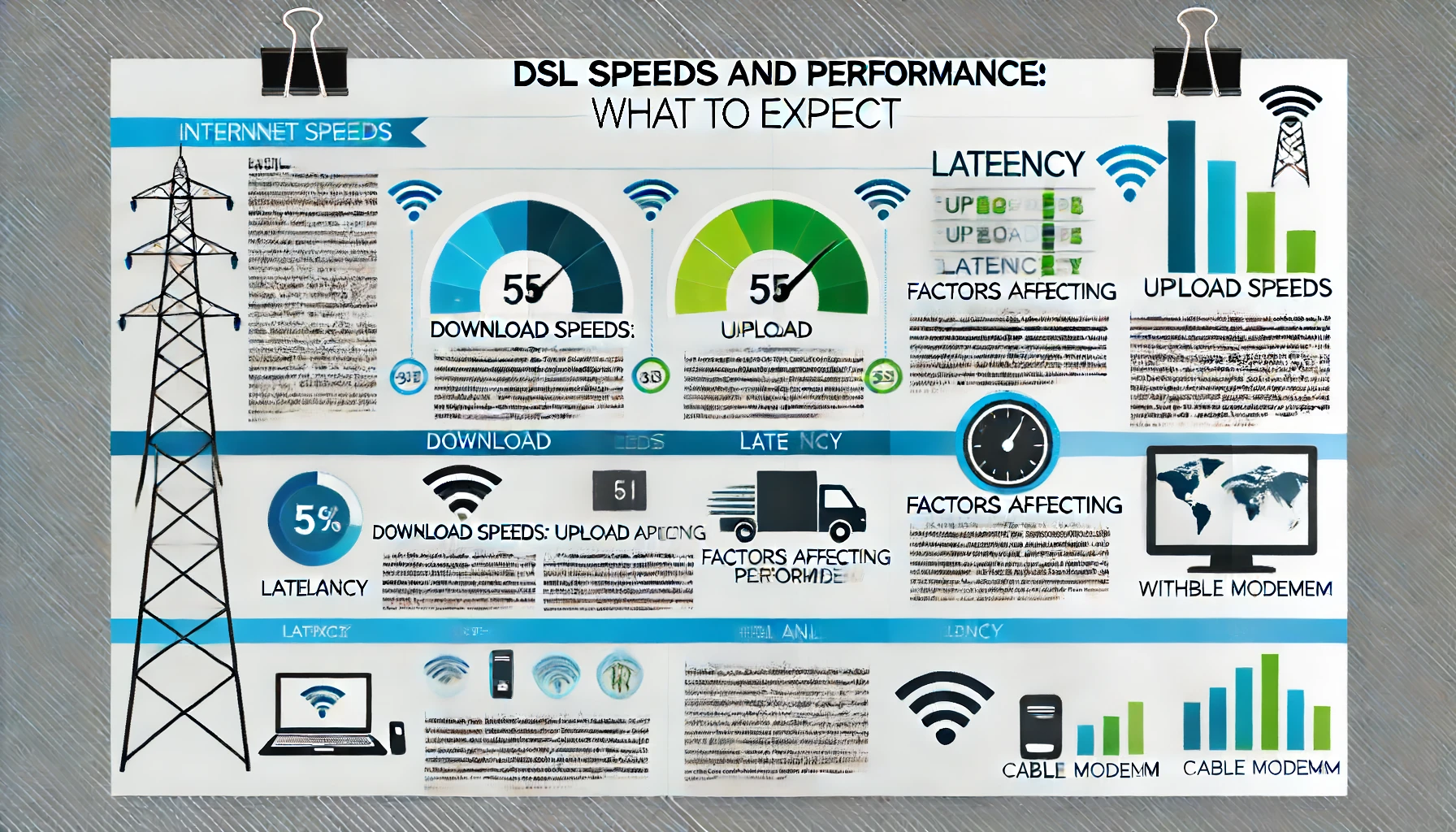In today’s fast-paced digital world, having a reliable internet connection is crucial. Whether you’re working from home, streaming your favorite shows, or engaging in online gaming, understanding the different types of internet connections and their performance is essential. One of the common options available is Digital Subscriber Line (DSL). In this article, we’ll delve into what you can expect from DSL speeds and performance, providing you with all the information you need to make an informed decision.
What is DSL?
DSL is a type of internet connection that transmits data over traditional copper telephone lines. Unlike dial-up connections, DSL allows for simultaneous voice and data transmission, making it a more efficient and reliable option. There are various types of DSL, with the most common being Asymmetric Digital Subscriber Line (ADSL) and Very-high-bit-rate Digital Subscriber Line (VDSL).
Types of DSL
- ADSL (Asymmetric Digital Subscriber Line): This type of DSL offers higher download speeds compared to upload speeds, making it suitable for activities like browsing, streaming, and downloading files.
- VDSL (Very-high-bit-rate Digital Subscriber Line): VDSL provides significantly faster speeds than ADSL, both for downloading and uploading, making it ideal for high-demand activities such as online gaming and HD video conferencing.
Understanding DSL Speeds
The speed of a DSL connection can vary depending on several factors, including your location, the distance from your local exchange, and the quality of the telephone lines. Typically, ADSL speeds range from 1 Mbps to 20 Mbps for downloads and 0.5 Mbps to 2 Mbps for uploads. On the other hand, VDSL speeds can reach up to 100 Mbps for downloads and 40 Mbps for uploads.
Factors Affecting DSL Speeds
- Distance from the DSLAM: The Digital Subscriber Line Access Multiplexer (DSLAM) is a device at the telephone exchange that connects multiple DSL users to the internet. The farther you are from the DSLAM, the weaker the signal and the slower the speeds.
- Line Quality: The condition of the copper lines can impact your DSL performance. Older or damaged lines may result in slower speeds and more frequent disconnections.
- Interference: Electrical interference from other devices and poor wiring can affect DSL speeds.
- Network Congestion: During peak usage times, you may experience slower speeds due to high network demand.
Performance Expectations
When choosing a DSL plan, it’s essential to have realistic expectations about the performance you can achieve. Here are some examples to help you understand what different DSL speeds can handle:
- 1-5 Mbps: Suitable for basic web browsing, checking emails, and streaming music.
- 5-10 Mbps: Can handle standard definition video streaming, online gaming with some latency, and video conferencing.
- 10-20 Mbps: Ideal for high-definition video streaming, smoother online gaming, and quicker downloads.
- 20-50 Mbps: Excellent for multiple devices streaming HD videos, online gaming with low latency, and faster file downloads.
- 50-100 Mbps: Best for households with multiple users, 4K video streaming, and bandwidth-intensive applications.
Enhancing DSL Performance
While DSL speeds might not always match those of fiber-optic connections, there are several steps you can take to optimize your DSL performance:
- Upgrade Your Modem: Using a modern DSL modem can improve connection stability and speed.
- Check Your Wiring: Ensure that the internal wiring in your home is in good condition. Replacing old or damaged cables can make a significant difference.
- Reduce Interference: Keep your modem away from other electronic devices that might cause interference.
- Optimize Wi-Fi: Use a quality router and place it in a central location to ensure even distribution of the Wi-Fi signal throughout your home.
- Contact Your ISP: If you experience persistent issues, contact your Internet Service Provider (ISP) to check for line faults or to upgrade your service plan.
Choosing the Right DSL Plan
When selecting a DSL plan, it’s essential to consider your household’s specific internet usage needs. Factors like the number of connected devices, the types of online activities, and the required upload and download speeds all play a crucial role. For instance, if you frequently engage in HD video streaming, online gaming, or work from home with video conferencing, opting for a higher-speed VDSL plan would be beneficial. On the other hand, a standard ADSL plan might suffice for basic browsing and emailing. Ensuring you choose the right strategy not only enhances your online experience but also helps you avoid overpaying for unused bandwidth. Always compare plans from different ISPs and read customer reviews to make an informed decision.
Common Myths About DSL
Several misconceptions about DSL can lead to confusion. Let’s debunk some of these myths:
- Myth: DSL is the same as Dial-Up: Unlike dial-up, DSL provides faster speeds and allows simultaneous use of the internet and phone line.
- Myth: DSL is always slow: While not as fast as fiber-optic, DSL speeds can be quite adequate for many online activities, especially with VDSL.
- Myth: All DSL services are the same: Different types of DSL (ADSL, VDSL) offer varying speeds and performance, so it’s important to choose the right type for your needs.
Pros and Cons of DSL
To give you a balanced view, here are some pros and cons of DSL:
Pros:
- Widely Available: DSL is accessible in many areas where other high-speed options like fiber might not be available.
- Dedicated Connection: Unlike cable internet, which is shared among multiple users in a neighborhood, DSL provides a dedicated line, which can result in more consistent speeds.
- Cost-Effective: Generally, DSL plans are more affordable compared to fiber-optic connections.
Cons:
- Speed Limitations: DSL speeds are lower compared to fiber-optic and cable internet, which might not be suitable for very high-demand users.
- Distance Sensitivity: The performance of DSL heavily depends on your proximity to the DSLAM, with speeds decreasing as distance increases.
- Line Quality Issues: Older copper lines can deteriorate over time, affecting the stability and speed of your connection.
Conclusion
In conclusion, while DSL might not offer the lightning-fast speeds of fiber-optic connections, it remains a reliable and accessible option for many households. By understanding the factors that affect DSL speeds and taking steps to optimize your connection, you can enjoy a satisfactory internet experience. Whether you’re streaming, gaming, or working from home, choosing the right DSL plan tailored to your needs can make all the difference. Remember to consider the type of DSL, your location, and your specific internet usage to ensure you get the best possible performance from your connection.
We hope this guide has provided you with valuable insights into what to expect from DSL speeds and performance. For more tips and information on internet connectivity, stay tuned to our blog at Community Radio. Feel free to reach out with any questions or share your experiences with DSL in the comments below!


Leave a Reply